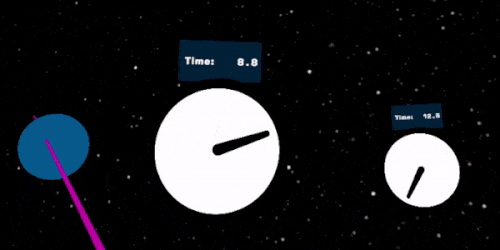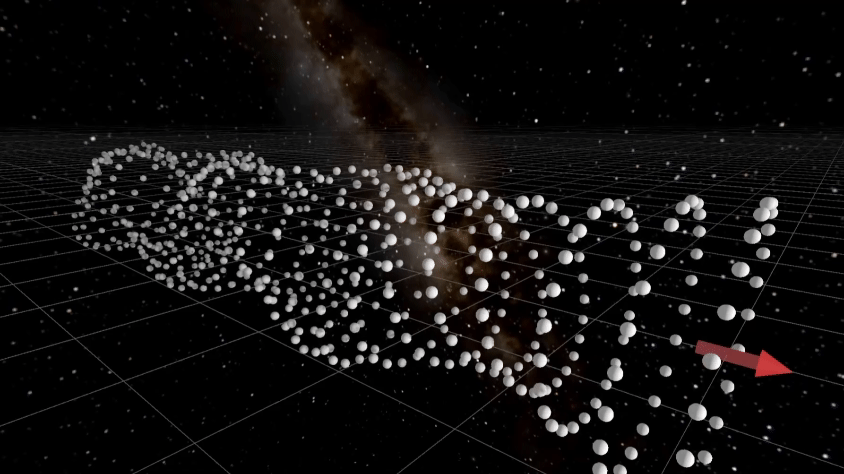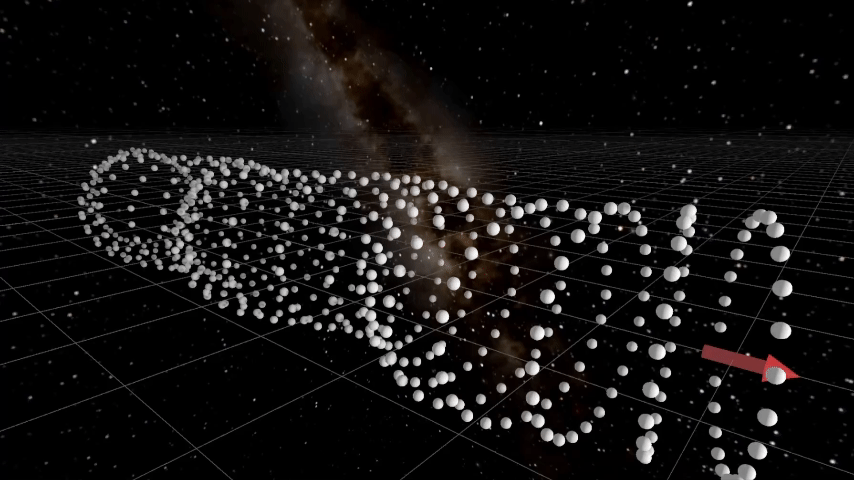Animations
Polarizations of gravitational waves
Under my leadership, the POINT collaboration developed animations which illustrate how the different polarizations of gravitational waves distort spacetime. Though waves in general relativity contain only two polarizations, waves in modified theories of gravity may consist of up to six polarizations. Here we illustrate how a tube of test particles would be distorted as each of those individual polarizations propagates along the direction of the red arrow. These animations were made from a virtual reality experience that is available on Github and the paper about this experience will soon be found on the ISVC website. Within this experience the user has the option to explore how these polarizations affect different shapes of objects and to turn on multiple polarizations at once to observe how different effects would combine in specific modified theories of gravity. To use these animations in talks, please credit [Schumacher et al., ISVC 2024; POINT collaboration].
General relativity in virtual reality
Under my leadership, the POINT collaboration developed a virtual reality experience which explores general relativity for the non-expert. This experience aims to convey the following learning objectives:
-
We live in a 4-dimensional smooth and continuous fabric, called spacetime.
-
The curvature of this spacetime is what we recognize as a gravitational field. As John Wheeler famously said, "Spacetime tells matter how to move; matter tells spacetime how to curve."
In our simulation, users can move objects through a spatial grid and watch it deform in response to the mass.
Likewise, they can explore time dilation by observing one clock slow down relative to another in the presence of a gravitational field.
Users carry out several activities which allow them to explore the relationship between mass, the strength of the gravitational field, and the effect on spacetime distortion. This simulation is currently available as an apk file on Github and will soon be available on the Meta store for use on Meta Quest headsets. For an assessment of how this simulation compares with other teaching methods for general relativity, see the paper we published in ASEE. To use these animations or the program itself, please credit [Schumacher et al., ASEE 2023; POINT collaboration].













